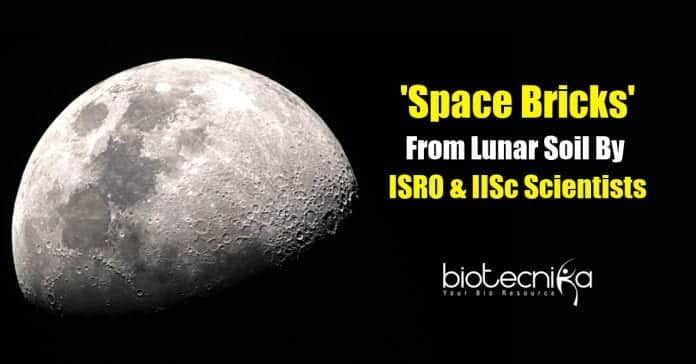Space Bricks From Lunar Soil Developed By ISRO and IISc Scientists
A sustainable process of making bricks on the moon has been developed by researchers from the Indian Institute of Science (IISc) and the Indian Space Research Organisation (ISRO). The process of making bricks uses lunar soil, bacteria, guar beans, and urea so that self-sustaining structures can be built on the moon someday.
A researcher of the city-based science institute told IANS that extracting lunar soil and hardening it into brick-like structures using guar beans and bacteria is involved in the process that might enable habitation on the moon in the future.
India is also a part of the race where many countries have hopes of sending humans to Mars, Moon, and other planets of the solar system. The Gaganyaan mission, slated for 2022, is something ISRO is working on to send the first human being to the orbit. For the mission, four cosmonauts are being trained in Russia currently.
Colonizing other planets is also a mission for space scientists, with NASA’s Artemis mission being the furthest so far in exploring the same. However, traveling to space and sending this one pound of Rs 7.5 lakh worth material to space
is too expensive with today’s technological capabilities. Using things found in the moon will be the next best thing to do if sending materials from Earth is not a viable option.The “space bricks,” as the researchers call them, could be used to create habitation structures on the moon. This is a sustainable as well as a cost-effective option compared to cement.
Aloke Kumar, Assistant Professor in the Department of Mechanical Engineering, IISc, said that both biology and engineering field are brought together in this, which makes it more interesting.
The raw materials for these bricks include lunar soil and urea, which is found in human urine, both readily available. A bulk of these bricks were made by the researchers by adding guar gum extracted from guar beans.
The researchers also found another option where they use a bacterium called Sporosarcina pasteurii that produce calcium carbonate crystals through the ureolytic metabolic cycle. These bacteria form these crystals as by-products of the pathway using urea and calcium.
The bricks were formed by mixing lunar soil with these bacteria, urea, guar gum, and calcium. They were found to have significant machinability and strength after a couple of days. Using a simple lathe machine, the researchers were able to mold the material into any shape.
Koushik Viswanathan, Assistant Professor in IISc, said in a statement that the recipe makes it flexible to use in a variety of shapes by casting.
Intricate interlocking structures for construction can be made on the moon exploiting this capability, he added.
The journal Ceramics International published the findings. Another bacterium option – Bacillus velezensis instead of the Sporosarcina pasteurii was also considered in a study led by Rashmi Dikshit, a DBT-BioCARe Fellow at IISc. Since Sporosarcina pasteurii is expensive, cheaper, and locally available, Bacillus velezensis with similar properties was used. The journal PLOS One published the results.
Further research is required before we can think of extra-terrestrial habitats. The scientists will try to make larger space bricks from lunar soil with a more parallel and automated process in the future. Meanwhile, they are planning to test and improve the strength of these space bricks.






























